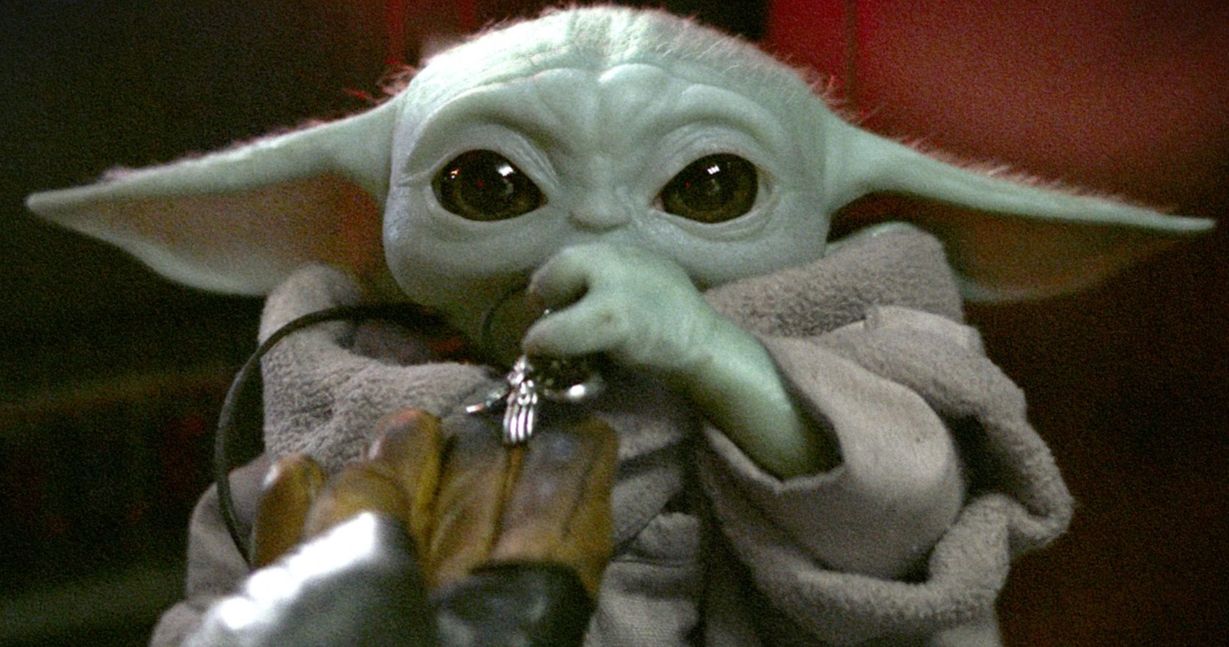The breakout star of The Mandalorian is The Child known to fans as Baby Yoda. Following in the proud tradition of Star Wars using extensive puppetry and practical effects to bring the alien worlds of a galaxy far, far away to life, the VFX team behind the creation of Baby Yoda created a working puppet for the character that was so lifelike it ended up doing a lot of the heavy lifting during filming, as John Rosengrant, co-founder and special effects supervisor at Legacy Effects explained to IndieWire in an interview.
"We did a proof of concept three weeks before shooting, and even once we started shooting, I don't know that we were convinced that the puppet was going to do as much as it did. But, on set, there was an aha moment of what it was capable of, and it came together in an organic way. But it is a hybrid performance, and they had to seamlessly blend the CG [from Industrial Light & Magic] with the puppet."
VFX supervisor Richard Bluff also states that the Baby Yoda puppet used onset was so lifelike that it ended up informing the CGI animation added in post-production for the character, rather than the other way around.
"Jon really wants practical when he can, but when he can't, he wants to be sure the audience is fooled and doesn't know which technique they're seeing. Normally, we discover things on set where we're fine doing a lot more CG shots than we thought in post. Here, it was the opposite and it was fun for everyone, especially for The Legacy folks. We really hit the magic working on set, and that became the ground truth for the character. We took our cues from the puppet. Our work was to ensure that anytime it couldn't be a puppet, people still thought it was a puppet [walking, crawling, using The Force, eating or spitting out frogs]."
Bluff had also worked with Frank Oz on the original Star Wars movies, where Oz was in charge of controlling the puppet representing adult Yoda, and that experience informed some of the decisions the special effects team took while designing the puppet for Baby Yoda.
"We learned how Frank Oz controlled the puppet from inside with his hands, why the face moved the way it did, how the ears had a rubbery vibration, and that helped here as well. We looked at the underlying mechanisms, and they're pretty simple on the Baby because he hasn't evolved yet. And it was a good lesson for our beginning animators in terms of less is more."
All that hard work resulted in the puppet becoming an instant favorite among the cast and fans of the series. Filmmaker Werner Herzog, who plays a character on The Mandalorian, was so impressed by the animatronic doll that Rosengrant reveals Herzog was afraid The Child was dead at one point when it was turned off.
"Werner really took a shine to it, and he liked reacting to it and having it there. And I know there was one scene where we were off camera and had turned him off and just shut him down. And Werner was expecting him to move and do his stuff. And he got very concerned and said, 'I think it's brain dead - I think it died.' And everybody cracked up laughing. I jumped in said, 'No, no, we just turned him off.' And I turned him back on."
These quotes come direct from Indiewire.

